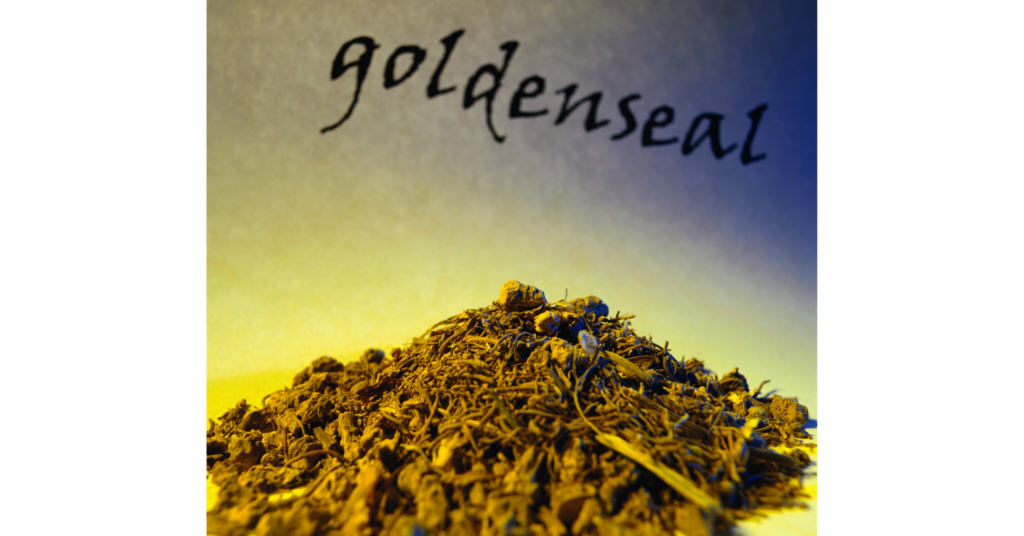Goldenseal (Hydrastis canadensis)
Hydrastis comes from ‘hydro’, the Ancient Greek word for water, and its name is believed to refer to the effect that goldenseal has on the mucous membranes.
Other names: Eyeroot, eye balm, ground raspberry, yellowroot, orangeroot, Indian turmeric.
Goldenseal combines well with the herb echinacea.
Description and the places it grows in
Low herbaceous perennial with green and white flowers, and with berries that are raspberry shaped. Native to North America, where it was used as a medicine and a dye. It is threatened in the wild due to over harvesting.
Parts used
Roots and rhizomes that are unearthed in the Autumn / Fall.
Uses
Antibiotic, bitter, tonic, stomachic, laxative, smooth muscle stimulant, anti-haemorrhagic, hypoglycaemic.
Catarrh and phlegm: Goldenseal acts as a tonic on the mucous membranes and is one of the best herbs to use in the treatment of phlegm and catarrh. It was even taken in the form of snuff so it could get to work on the mucous membranes quickly.
Gums: Used in a mouthwash.
Digestive disorders: Including loss of appetite.
Respiratory conditions: Do not use for long periods of time as it is very drying.
Peptic Ulcer: It aids in the secretion of bile.
Other uses: Ringworm, impetigo (although it does stain the skin yellow); infusion used as ear-drops.
Constituents
Alkaloids (hydrastine and berberine) volatile oils and resin.
Contraindications
Do not use if pregnant as this herb stimulates the uterus. It is also poisonous if taken in large doses.

